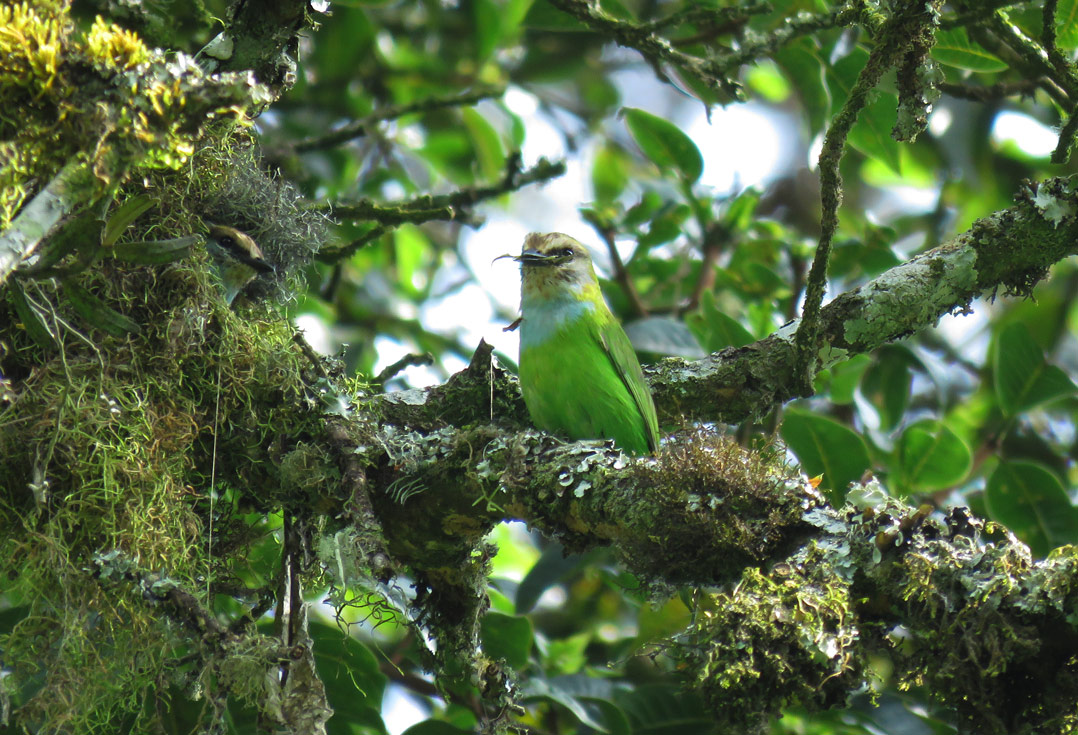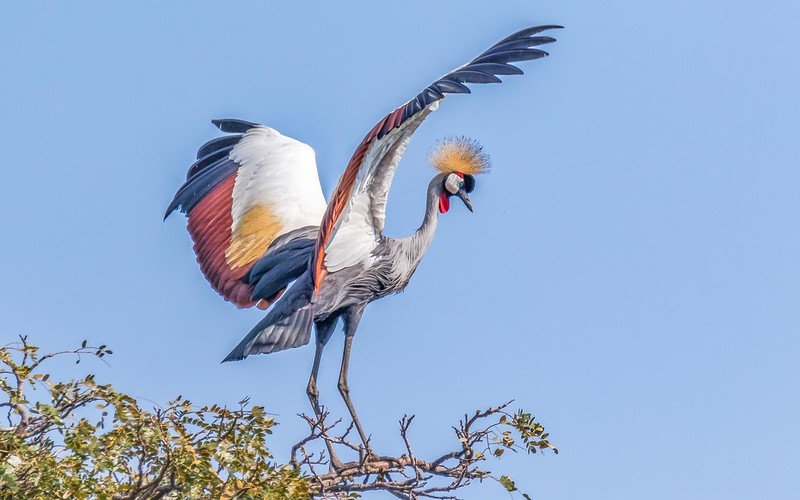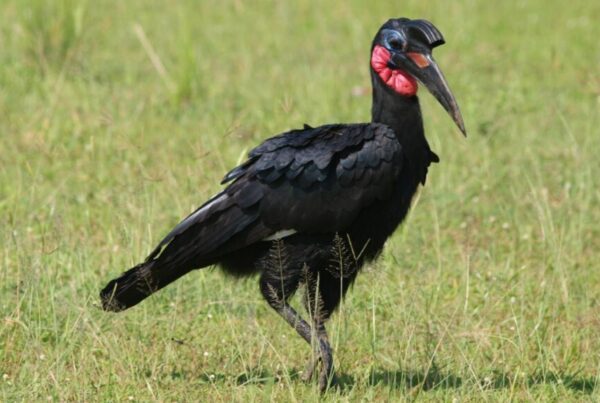Birdwatching in Bwindi: Uganda’s Avian Paradise
A Symphony of Feathers and Forests
Nestled in the southwestern corner of Uganda, Bwindi Impenetrable Forest has long been celebrated for its iconic mountain gorillas, yet hidden within its dense foliage is another extraordinary treasure: a vibrant, diverse avian population that thrills bird enthusiasts from around the globe. Birdwatching in Bwindi is not merely an activity; it is an immersion into a living orchestra of color, song, and flight, where each step into the forest reveals a new species, a hidden nest, or the fleeting shimmer of an elusive plumage. The forest, cloaked in mist and mystery, provides both challenge and reward, appealing equally to casual nature lovers and dedicated ornithologists.
The significance of Bwindi as a birdwatching destination lies not only in the sheer number of species present but also in the rarity and endemism of its birds. Many species found here are Afro-montane endemics, existing only in restricted ranges within the Albertine Rift, a biodiversity hotspot recognized globally for its ecological importance. The forest’s unique microclimates, its network of streams, and the interplay between dense vegetation and open clearings create niches that are ideally suited for avian life.
The Geographical and Ecological Context of Bwindi
Bwindi Impenetrable Forest spans approximately 321 square kilometers, lying along the edge of the Albertine Rift Valley. Its elevation varies from 1,160 meters to over 2,600 meters, creating a remarkable diversity of habitats, from lowland swamp forests to high-altitude bamboo and montane forests. These ecological gradients are pivotal in sustaining a wide range of bird species, each adapted to specific forest layers, from the canopy to the undergrowth.
The forest experiences a bimodal rainfall pattern, with heavy rains falling between March and May and a secondary peak from September to November. This rainfall sustains lush vegetation year-round, creating an environment rich in fruits, seeds, and insects—critical food sources for birds. It also contributes to a network of streams and waterfalls that not only enhance the forest’s beauty but provide breeding and feeding grounds for aquatic and semi-aquatic species.
Bwindi’s forest structure is remarkably complex, with multiple vegetation strata. The emergent trees, towering above 50 meters, provide nesting and foraging opportunities for raptors and canopy dwellers. Mid-level trees and shrubs offer cover for understorey species, while the forest floor, dense with ferns, fallen logs, and leaf litter, hosts a variety of ground-dwelling birds. The richness of these layers, combined with minimal human disturbance in designated national park areas, has created a haven for species whose habitats are threatened elsewhere.
Avian Diversity in Bwindi: A Living Kaleidoscope
Bwindi Impenetrable Forest is home to over 350 bird species, making it a premier destination for birdwatching in East Africa. Among these, more than 23 species are Albertine Rift endemics, meaning they are found only in this region and nowhere else in the world. These include the Grauer’s Swamp Warbler, Handsome Francolin, and the Shelley’s Crimsonwing, each with its unique song and plumage, captivating observers fortunate enough to encounter them.
The diversity spans all ecological niches. Canopy specialists such as African Green Broadbills and African Grey Parrots dominate the upper reaches, while understorey dwellers like the Yellow-throated Woodland Warbler and Chapin’s Flycatcher thrive amidst dense shrubbery and moss-laden branches. Forest edges and bamboo zones host species such as the White-spotted Flufftail, which remains notoriously difficult to observe but is highly prized by dedicated birders. Seasonal visitors, including various sunbirds and migratory flycatchers, add another layer of dynamism, transforming the forest into a temporal mosaic of avian activity.
The calls and songs of these birds create a continuous soundscape, which not only serves to alert one to their presence but also offers an immersive auditory experience. Early mornings, when mist clings to the canopy and the forest is at its quietest, provide the most rewarding birding opportunities, with dawn choruses announcing the day’s activity in intricate, overlapping patterns.
Iconic and Rare Birds of Bwindi
Among the forest’s most celebrated residents is the African Green Broadbill, a small, vivid green bird with delicate markings and a melodious call. Its rarity and elusive behavior make it a prized sighting for any visitor. The Handsome Francolin, in contrast, is more terrestrial, striding gracefully across the forest floor and often flushed by attentive observers. The Red-faced Woodland Warbler and the Black-billed Turaco exemplify the striking plumage and subtle vocalizations that make Bwindi an avian paradise.
Endemic species hold particular fascination for ornithologists. Grauer’s Swamp Warbler, for instance, inhabits swamps and wetland edges within Bwindi, its presence signaling the health of these delicate ecosystems. The Kivu Ground Thrush, rarely encountered due to its cryptic nature, represents one of the many secretive species that underscore the forest’s ecological richness. The presence of such birds indicates Bwindi’s role as a critical refuge for threatened and restricted-range species, emphasizing the forest’s global conservation importance.
Seasonal Dynamics and Migration Patterns
Birdwatching in Bwindi is not static; it is a seasonally dynamic endeavor. While many species are resident year-round, the forest also hosts seasonal migrants from northern Africa and Europe. These include various flycatchers, warblers, and swallows, which arrive to exploit the abundant insect life during Uganda’s wet seasons. The interaction between residents and migrants creates an ever-changing tableau of avian activity, making repeated visits to Bwindi uniquely rewarding.
Rainfall patterns influence visibility and bird behavior. During peak rainy seasons, forest trails may be slippery and challenging, yet the abundance of food encourages higher activity among frugivorous and insectivorous species. Conversely, during drier periods, birds congregate near streams and waterholes, providing easier observation opportunities and enhancing photographic potential. Each season, therefore, offers a distinct birdwatching experience, from tracking secretive understorey species to witnessing colorful canopy dwellers in full display.
The Art and Science of Birdwatching in Bwindi
Successful birdwatching in Bwindi requires a blend of patience, skill, and ecological understanding. Observers must attune themselves to subtle cues: a fleeting shadow, a rustle of leaves, or the distant call of an unfamiliar songbird. The forest’s density necessitates slow, deliberate movement, often accompanied by guides with extensive knowledge of bird habits and habitats.
Guided walks enhance the experience significantly. Local guides are trained to identify species by both sight and sound, providing insights into behavior, feeding ecology, and breeding habits. Their knowledge allows visitors to locate even the most elusive species, revealing hidden nests, feeding territories, and migratory patterns that might otherwise remain unseen. The interaction between guide expertise and visitor curiosity transforms birdwatching from simple observation into a deeply engaging educational pursuit.
Photography, while increasingly popular, poses challenges in Bwindi’s low-light conditions. Canopy birds, elusive understorey species, and fast-moving flycatchers demand patience, steady equipment, and keen timing. However, successful photographs become more than souvenirs; they serve as records of ecological presence, contributing to citizen science and conservation efforts.
Conservation and Ecological Significance
Bwindi Impenetrable Forest is protected as a National Park and UNESCO World Heritage Site, recognizing both its cultural and ecological value. Bird populations are tightly linked to forest health, making the preservation of Bwindi critical not only for gorillas but for its avian inhabitants. Habitat degradation elsewhere in the Albertine Rift has increased the forest’s importance as a refuge for both endemic and migratory species.
Conservation initiatives focus on minimizing human impact while promoting sustainable tourism. Trails are carefully managed, and visitor numbers are regulated to reduce disturbance. Community programs educate surrounding populations about the importance of the forest and provide alternative livelihoods through ecotourism, mitigating pressures from logging and agriculture. Through such measures, Bwindi’s avian diversity remains resilient, ensuring that future generations can witness the same kaleidoscope of species that draws visitors today.
Experiencing Bwindi: Tips for Bird Enthusiasts
For those seeking to experience Bwindi at its finest, preparation enhances both comfort and success. Early morning walks, when birds are most active, are recommended, with light, breathable clothing and waterproof gear essential during wet periods. Binoculars and field guides tailored to Albertine Rift species enhance observation and identification. Silence and minimal movement are critical, allowing birds to continue natural behaviors without alarm.
Accommodation options near the park vary from rustic lodges to more luxurious establishments, each providing proximity to forest entrances and guiding services. Many lodges emphasize sustainable practices, including the use of local materials, responsible waste management, and community engagement, aligning with the conservation ethos of Bwindi.
The social aspect of birdwatching is equally enriching. Enthusiasts often find camaraderie in shared sightings, discussions about species behavior, and collaborative tracking of rare birds. This community dynamic fosters learning and cultural exchange, transforming birdwatching from a solitary pursuit into a deeply rewarding communal experience.
Birdwatching Beyond Bwindi
While Bwindi is a focal point, the Albertine Rift offers numerous complementary birding locations. Nearby forests, wetlands, and savannahs expand opportunities to observe species not present within Bwindi itself. These excursions provide comparative insights into habitat preferences, altitudinal variation, and broader ecological patterns, deepening appreciation for Uganda’s avian richness.
Moreover, integrating birdwatching with broader wildlife experiences enriches the visit. Observing primates, mammals, and butterflies in conjunction with birds provides a holistic understanding of forest ecology, highlighting interdependence among species and the intricate web of life that sustains Bwindi.
An Invitation to Discovery
Bwindi Impenetrable Forest stands as a testament to Uganda’s unparalleled biodiversity, a sanctuary where the thrill of birdwatching is matched by the serenity of untouched wilderness. Its dense canopies, hidden streams, and rich undergrowth create a stage for one of the most extraordinary avian spectacles in Africa. Each visit promises encounters with rare and endemic species, the discovery of hidden behaviors, and the profound satisfaction of connecting with nature in its purest form.
For travelers and bird enthusiasts seeking an immersive, unforgettable experience, Bwindi offers both challenge and reward. Its birdlife, intertwined with the forest’s ecological complexity, inspires awe and fosters a deep appreciation for conservation.
To truly experience the wonders of birdwatching in Bwindi, it is recommended to plan your journey through professional, knowledgeable tour operators. Booking your tours and safaris via WildHorn Africa ensures expert guidance, ethical and sustainable practices, and access to the best locations for bird observation. With their support, your journey into Uganda’s avian paradise will not only be memorable but also contribute to the ongoing protection of this remarkable ecosystem.





 WildHorn Africa – Authentic and unforgettable tours across Africa, guided by local experts who know the land, wildlife, and culture best.
WildHorn Africa – Authentic and unforgettable tours across Africa, guided by local experts who know the land, wildlife, and culture best.


